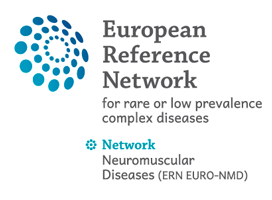08 Jun 2024
2024 update: European consensus statement on gene therapy for spinal muscular atrophy
Authors:
anbernd Kirschner a,*, Günther Bernert b, Nina Butoianu c , Liesbeth De Waele d,
Aviva Fattal-Valevski e, Jana Haberlova f, Teresa Moreno g, Andrea Klein h,
Anna Kostera-Pruszczyk i, Eugenio Mercuri j, Susana Quijano-Roy k, Thomas Sejersen l,m,
Eduardo F. Tizzano n, W Ludo van der Pol o, Sean Wallace p, Dimitrios Zafeiriou q,
Andreas Ziegler r, Francesco Muntoni s,1, Laurent Servais
a Department of Neuropediatrics and Muscle Disorders, Medical Center – University of Freiburg, Faculty of Medicine, Freiburg, Germany
b Neuromuscular Centre, Department of Pediatrics and Adolescent Medicine, Clinic Favoriten, Vienna, Austria
c Pediatric Neurology Clinic, “Prof. Dr. Al. Obregia” Hospital, Bucharest, Faculty of Medicine and Pharmacy “Carol Davila”, Bucharest, Romania
d Department of Pediatric Neurology, University Hospitals Leuven, and Department of Development and Regeneration, KU Leuven, Leuven, Belgium
e Pediatric Neurology Institute, Dana-Dwek Children’s Hospital, Tel Aviv Sourasky Medical Center, Faculty of Medicine, Tel Aviv University, Israel
f Dept of Pediatric Neurology, Motol University Hospital, Prague, Czech Republic
g Pediatric Neurology Unit, Hospital de Santa Maria, Centro Hospitalar Universit´ario Lisboa Norte, Lisbon, Portugal
h Division of Neuropaediatrics, Development and Rehabilitation, Department of Paediatrics, Inselspital, Bern University Hospital, Bern, Switzerland
i Department of Neurology, Medical University of Warsaw, Poland
j Pediatric Neurology, Universit`a Cattolica del Sacro Cuore, and Centro Clinico Nemo, Fondazione Policlinico Gemelli IRCCS, Rome, Italy
k Neuromuscular Unit, Child Neurology and ICU Department, Raymond Poincar´e University Hospital (UVSQ), APHP Paris Saclay, Garches, France
l Department of Women’s and Children’s Health, Karolinska Institutet, Stockholm, Sweden
m Department Center for Neuromusculoskeletal Restorative Medicine, Hong Kong Science Park, Shatin, New Territories, Hong Kong, China
n Department of Clinical and Molecular Genetics, Medicine Genetics Group, University Hospital Vall d’Hebron, Barcelona, Spain
o Department of Neurology, UMC Utrecht Brain Center, University Medical Center Utrecht, Utrecht University, the Netherlands
p Department of Clinical Neurosciences for Children and Unit for Congenital and Hereditary Neuromuscular Disorders, Department of Neurology, Oslo University
Hospital, Oslo, Norway
q 1st Department of Pediatrics, «Hippokratio» General Hospital, Aristotle University, Thessaloniki, Greece
r Heidelberg University, Medical Faculty Heidelberg, Center for Pediatric and Adolescent Medicine, Department I, Division of Pediatric Neurology and Metabolic Medicine,
Germany
s Dubowitz Neuromuscular Centre, UCL Great Ormond Street Institute of Child Health, and NIHR Biomedical Research Centre, Great Ormond Street Hospital for Children,
London, UK
t Neuromuscular Reference Center, Department of Pediatrics, University Hospital Li`ege & University of Li`ege, Belgium
u MDUK Oxford Neuromuscular Centre & NIHR Oxford Biomedical Research Centre, University of Oxford, Oxford, UK
Spinal muscular atrophy (SMA) is one of the most common genetic diseases and was, until recently, a leading genetic cause of infant mortality. Three disease-modifying treatments have dramatically changed the disease trajectories and outcome for severely affected infants (SMA type 1), especially when initiated in the presymptomatic phase. One of these treatments is the adeno-associated viral vector 9 (AAV9) based gene therapy onasemnogene abeparvovec (Zolgensma®), which is delivered systemically and has been approved by the European Medicine Agency for SMA patients with up to three copies of the SMN2 gene or with the clinical presentation of SMA type 1. While this broad indication provides flexibility in patient selection, it also raises concerns about the risk-benefit ratio for patients with limited or no evidence supporting treatment.
In 2020, we convened a European neuromuscular expert working group to support the rational use of onasemnogene abeparvovec, employing a modified Delphi methodology. After three years, we have assembled a
similar yet larger group of European experts who assessed the emerging evidence of onasemnogene abeparvovec’s role in treating older and heavier SMA patients, integrating insights from recent clinical trials and
real-world evidence. This effort resulted in 12 consensus statements, with strong consensus achieved on 9 and consensus on the remaining 3, reflecting the evolving role of onasemnogene abeparvovec in treating SMA.

